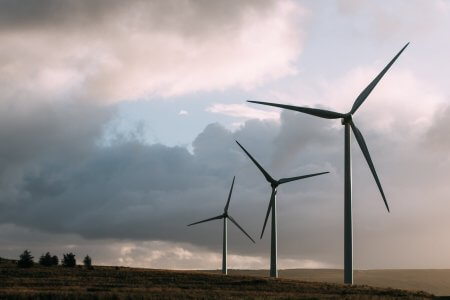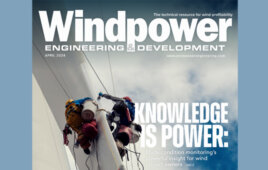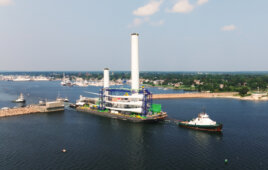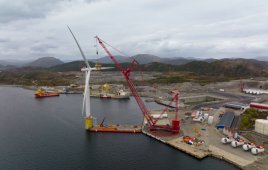By Robert Glass, head of marketing, Exel Composites
Climate change is arguably the biggest threat to our planet, with its long term effects being variable in magnitude and difficult to predict. Its resultant extreme weather patterns can damage infrastructure, threaten food security, degrade the environment and pose a risk to human health and safety.
A powerful change
 One major contributor to climate change is the production of greenhouse gases, such as carbon dioxide and nitrous oxide. Power generation produces a significant amount of emissions, accounting for 33.3 billion tons in 2019. Although a high figure, this was not an increase from the power generation emissions in 2018, breaking the previous upwards slope in emissions.
One major contributor to climate change is the production of greenhouse gases, such as carbon dioxide and nitrous oxide. Power generation produces a significant amount of emissions, accounting for 33.3 billion tons in 2019. Although a high figure, this was not an increase from the power generation emissions in 2018, breaking the previous upwards slope in emissions.
The stability in emissions was largely attributed to the global increase in renewable energy transitions. With this in mind, the global uptake of renewable energy must continue to increase if we are to minimize climate change.
Wind power has become a globally popular renewable energy source, with over 340,000 wind turbines on the planet and an overall power capacity of 597 GW. Wind power is particularly advantageous over other renewable energy resources as it doesn’t require water and takes up minimal lateral space. But creating powerful, environmentally friendly energy resources requires an equally beneficial material choice to produce and transmit their power.
Clever composites
Composites are already well known for aiding the wind power sector. A significant amount of a turbine blade’s strength comes from its spar caps, which are the support beams inside the blades. Making the spar caps from carbon fiber reduces the weight of the turbine blade, so manufacturers can produce longer blades. This in turn increases the power output and efficiency of the wind turbine.
 However, in order to increase adoption of wind power into widespread infrastructure, we need to not only optimize the performance of the wind turbines, but also their power transmission across the grid. The major limiting factor for how much wind power can be connected to the grid is often the maximum current capacity of the overhead lines.
However, in order to increase adoption of wind power into widespread infrastructure, we need to not only optimize the performance of the wind turbines, but also their power transmission across the grid. The major limiting factor for how much wind power can be connected to the grid is often the maximum current capacity of the overhead lines.
Maximum current capacity is determined by the line temperature limit, which ensures a safe distance between the line and the ground. Going beyond the current capacity threshold overheats the wire, causing the conductor material to expand and the power line to lengthen, triggering a ‘thermal sag.’ Sagging of a powerline can lead to power outages, and also pose a health and safety risk.
One solution is to install more cable lines, but this is not as simple as it may appear. An overhaul of power cables is a large project, involving the acquisition of new land rights, passing environmental regulations, lengthy installation time and additional labor costs. This option takes a long amount of time to implement, with significant associated financial costs. A quicker and more cost effective solution is to upgrade the existing lines.
Down to the wire
Traditional power cable wires, or conductors, are Aluminum Conductor Steel Reinforced (ACSR) conductors that consist of an outer aluminum conducting ring with a steel core that provides support and strength. However, steel has a high coefficient of thermal expansion (CTE), which means steel core cables expand significantly when heated, leading to thermal sag.
Steel core conductors can be replaced with ones with a composite core — Aluminum Conductor Composite Reinforced (ACCR) conductors — using the existing grid infrastructure. Composite cores have a much lower CTE than steel, meaning they can withstand higher temperatures without causing the cable to sag, making the cable a High-Temperature Low-Sag (HTLS) conductor.
Composite cored conductors can carry approximately twice the current of steel cored conductors at much cooler operating temperatures. Composite cores also have a high strength to weight ratio than steel, allowing a greater amount of aluminum in the cable for power transmission without weighting the cable down.
Composite-cored HTLS conductors are rapidly growing in the overheating power market, helping to decrease thermal sag and deliver more power. With composite cores increasing the maximum current capacity of overhead cables, the potential of transmitting energy from wind power into infrastructure can be heightened.
Exel Composites manufactures composite cores for overhead cables and has several decades’ experience with the electrical industry. The composite cores have a low CTE and a high strength to weight ratio, minimizing thermal sag and maximizing power transmission. Exel also manufactures reinforcement composites for wind turbine blades, which can be combined with composite core reinforced cables to bring a large wind power source to urban infrastructure.
Wind power is already a popular clean energy source, but power grid infrastructure often limits its potential. Composites are aiding the adoption of wind power, not only by making turbines more powerful and efficient, but also by increasing the current capacity of power cables. Integrating the most advanced materials and technology into infrastructure will help us step further toward a more sustainable future.
Exel Composites, a global technology company headquartered in Finland, is a manufacturer of pultruded and pull-wound composite solutions. Our global manufacturing, R&D, and sales footprint serves customers across a broad range of industries and applications. With 60 years of composites experience and engineering expertise, we work closely with our customers to design and manufacture high quality composite solutions using carbon fiber, fiberglass, and other high-performance materials. Our composites help reduce weight, improve performance, and decrease total life cycle costs, all while helping increase energy efficiencies and supporting environmental sustainability.
Filed Under: Featured




